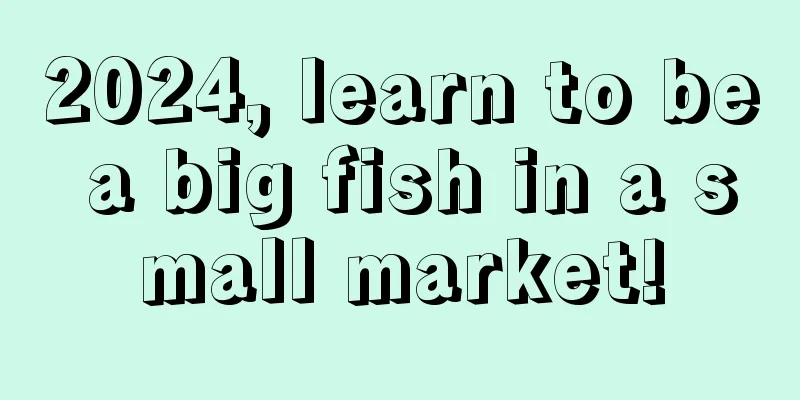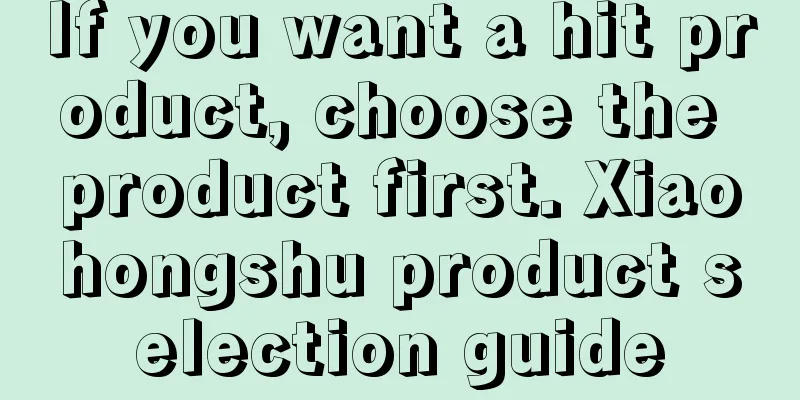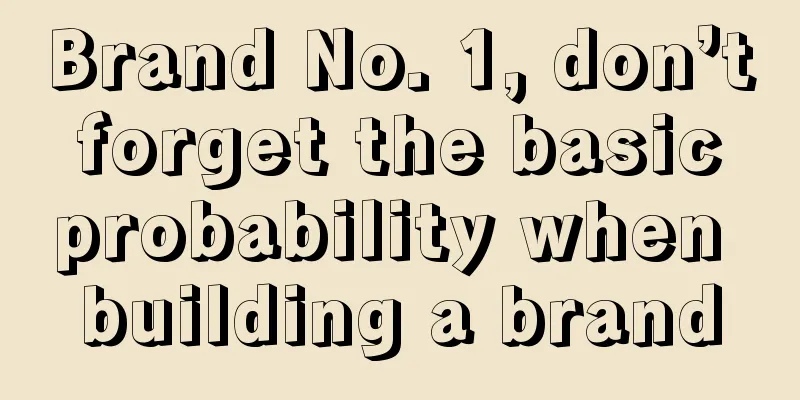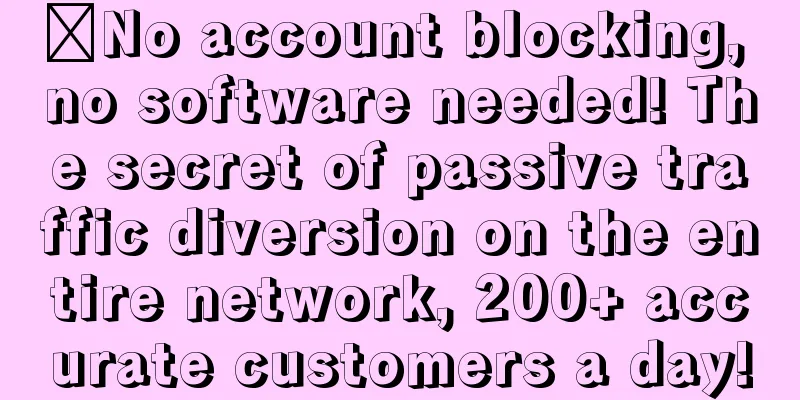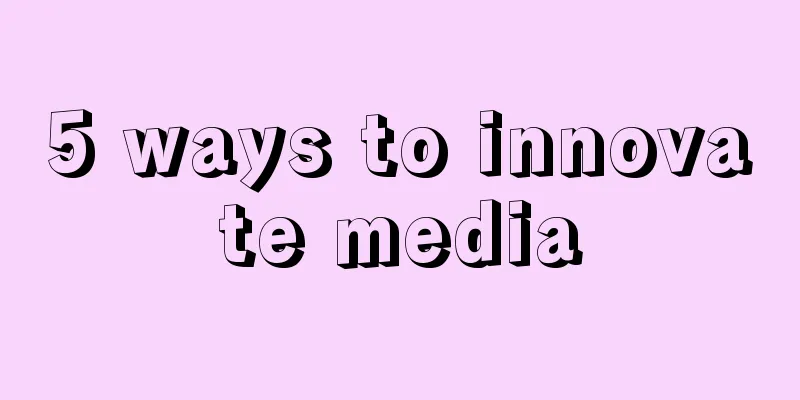How to attract the middle class with high education and low income? See how this company does it.

We have always thought that the offline retail industry is a thing of the past and cannot compete with e-commerce platforms such as Taobao and Douyin. In fact, it is not that offline retail is no longer popular, but that the management methods of offline retail are lagging behind the times. As long as you find the right management methods, your store performance will pick up again. So, for this issue, I decided to research Trader Joe’s, which has approximately 500 stores in 42 states and more than 50,000 employees. You may think this data is quite average. But you have to know that their annual revenue per store is about 26 million US dollars, which is the sum of 10 7-Eleven convenience stores. Its sales per square meter is 1,750 US dollars, which exceeds Costco and Whole Foods Market and is more than 4 times that of Walmart. What I admire most is that Joe's supermarket targets the middle class. The middle class is the most difficult to deal with because they are highly educated, worldly-wise, and have high requirements for products. These requirements are not only related to product quality, but also include consumer experience and price, which can even be a bit demanding. But Trader Joe's has not only successfully attracted the middle class, but also achieved a product repurchase rate of over 90%. Trader Joe's began its rise in the 1970s. It paid attention to and served the emerging middle class earlier than many other brands, becoming a pioneer in this market. Its story is particularly worth exploring. 01 The chance of victory lies in the gaps of timeThe predecessor of Trader Joe's Supermarket was called "Pronto Store", and its initial business model was to imitate 7-Eleven. After the founder of Trader Joe took over, he thought that the 7-Eleven model could no longer be used, because in his opinion, this model only extended the business hours. At that time, their business base was in California, USA. Shortly after he took over the store, 7-Eleven was about to enter the California market. They could not compete with it in terms of operation, talent and price. So he started thinking about his core competency, and the first way he found was selling wine. Why choose to sell wine? Because California had introduced the Fair Trade Act at the time, which stipulated that alcohol must have a minimum selling price. This policy brought one benefit: since the government clearly stipulated the minimum price, companies were guaranteed a certain profit. Moreover, to sell alcohol, a store or supermarket must have a liquor license. 7-Eleven did not have a liquor license before entering the market, and it takes time to obtain this license. In addition, as a traditional family convenience store, 7-Eleven mainly serves family customers such as ladies, children and the elderly in the surrounding community. It seems inappropriate to sell spirits in such a convenience store. As a result, Joe's Supermarket introduced a large number of spirits, especially wine, and took a differentiated route. But simply finding differentiated categories is not enough to withstand competition from giants. The key is to have more differentiation. The reason I emphasize differentiation is because it is an important judgment on the nature of business. The retail industry is essentially a sales floor. Supermarkets and convenience stores purchase goods and then sell them to others. Think about it, whether it's 7-Eleven or Whole Foods, they are both places that sell goods. What's the difference between them? In fact, most of the products are the same, so the only difference is price. Therefore, the fundamental problem in the retail industry is to compete on differentiation. Joe, the founder of Joe's supermarket, realized this many years ago. He felt that in addition to the difference in categories, the more important thing was the difference in people. We mentioned earlier that the core target group of Joe's supermarket is the middle class. How does Mr. Joe define the middle class? He initially thought that the middle class was a group of people with high education and who liked to travel. Later, he felt that this definition was not precise enough, so he modified it, saying that the middle class is a group of people with "high education but relatively low income". This definition is a bit heartbreaking. Around 1965, he read a news item in Scientific American magazine: Around 1932, only 2% of the American population could attend college, but by 1964, this proportion had surged to 60%. During these 30 years, the number of people with high education in the United States increased dramatically. Another piece of news he saw in the Wall Street Journal: Around 1970, the Boeing 747 aircraft was introduced to civilian use, which greatly reduced the cost of international travel. In 20 years, the cost of airfare from the United States to Europe dropped by 67%. While running Pronto’s, he discovered that frequent travelers, even those who had only visited U.S. cities like San Francisco, had a demand for new foods that far exceeded what they could offer at the time. He then had an interesting insight: travel is essentially a form of education. Combining these two pieces of news, he believes that future business opportunities lie in this small but rapidly growing middle-class population with high education and low income. This judgment is similar to Drucker's view. Drucker wrote a famous saying in a management book: “Most companies make decisions based on the future in a deterministic way, but this is often counterproductive or unproductive. Planning for uncertainty is the right approach. You need to ask yourself what has already happened and what you can build on to build the future.” Among these important factors, the most important one is the change in population structure, which will determine the future trend. 02 Private label: Either the price is the lowest or others don’t have itWe mentioned earlier that the essence of retail is to seek differentiation in homogeneous competition. How does Joe's achieve product differentiation? The key lies in operating its own brand. This is different from the business logic of many supermarkets. Why do many Chinese supermarkets we see today, such as Yonghui and Walmart, decline? In Joe's opinion, the problem with these supermarkets is that they mostly sell mass commodities, that is, standardized products. You have these standardized products, and others also have them, so you can only compete through price wars. In fact, your core product should be your own brand, something that others don't have. Why did he have this insight? Here is a story. One day, a man tried to sell him eggs, saying that he had a lot of oversized eggs that couldn't be sold, so he sold them to him at the price of ordinary eggs. He took a look and found that these eggs were indeed much larger than ordinary eggs. He wondered why they were sold so cheaply? Because large supermarket groups like 7-Eleven need to ensure consistent quality control across their product lines. You can’t just buy oversized eggs in a few stores in California, and then buy regular eggs in Los Angeles and sell them at the same price. Trader Joe's was smaller at the time, so it could absorb the extra-large eggs. So he sold them at the price of regular eggs, and customers loved them, and the product sold out quickly. Since then, Trader Joe's has developed an important brand concept, which is not to rely on any established standardized products. If you walk into a Trader Joe's today, most of the items are private label, like caviar, olive oil, etc. They sell virtually no standardized branded products that satisfy basic needs, like toilet paper, sugar, flour, laundry detergent, shampoo, etc. As mentioned earlier, the core category of non-standard products that Joe's Supermarket initially sold was wine. Wine is very interesting. It is a non-standard product. Everyone has come into contact with wine to some extent. Almost every type of wine is limited because it comes from a specific place, such as a farm in Bordeaux or a village in Italy. Since the production area is small, the taste of wine produced in each production area is different due to differences in sunlight, soil, and temperature. The production area is limited, and the supply of wine is also limited, so it becomes a limited edition. Therefore, there is a phenomenon in the wine industry: the price of liquor is relatively fixed, but the price of wine varies greatly due to different years, different origins, and different styles. The pricing space of wine is very flexible. Therefore, Joe locked in the large category of wine and continued to expand. Later, wine became a very important non-standard product line of Joe's supermarket. This business principle was later called the "wine principle" and was applied to other categories of Joe's supermarket. Moreover, Trader Joe's will not create its own brand just for the sake of having its own brand. Trader Joe's has a very important principle when launching its own brand: either the price is the lowest or others do not have it. For example, they had a product called "Frozen Pizza No. 1". When the supplier first offered it, they didn't want it because they felt that the pizzas were all the same and had no competitive advantage. Later, they worked with the supplier to reduce the size of the pizzas, increase the differentiation of the product, and then reintroduced it. Many people may have the experience of buying frozen pizzas, which are usually large in size and need to be cut when heated in an air fryer. However, this frozen pizza No. 1 from Trader Joe's is just the right size and can be put into the air fryer and oven without cutting, which makes the product a hot seller. In summary, the core of Trader Joe's differentiated competition lies in owning its own brand, and the core principle of owning its own brand is: either the price is the lowest or others don't have it. 03 Knowledge-based advertising: an advertising model that achieves great results with little moneyWhen we talk to some businessmen, they often discuss sales techniques, business logic and policy logic, and rarely involve product knowledge. But the founder of Joe's Supermarket pays great attention to the knowledge of the product itself. He pays attention to medical development every day and studies the functional elements of the product. Because he believes that only by deeply understanding the product knowledge can we know the advantages and disadvantages of the product, so as to extract the real selling point or develop products that meet the needs of consumers. He even believes that even if the product is to be discounted or participate in price competition, it is necessary to study product knowledge, because only in this way can you know how to reduce costs or increase value to make the product competitive, rather than blindly discounting. So, Joe created a new advertising model - knowledge-based advertising. This advertising model was derived from their experience in selling wine. To really taste the quality of wine, one needs a certain level of tasting ability, because all wines are special or limited, come from different producing areas, and have different flavors. Therefore, a lot of wine-related knowledge must be mastered to experience the uniqueness of each wine. To address this issue, Trader Joe's created an internal reference manual for users to learn about the differences between each wine. Later, they launched a promotional activity based on this manual - product blind testing, inviting users to taste and rate the products. The products with the highest ratings will be promoted at the lowest price. The campaign was a huge success, and they quickly realized that the same internal reference approach for wine could be applied to food. So they created an internal food reference manual, which allowed users to better understand the advantages of the product and became a reference manual to help sales staff sell the product. Gradually, their product manuals were collected by many middle-class Americans. Inspired by the New Yorker magazine, the positioning of the manual has also changed. They hope that the manual can become a place for American middle-class housewives to learn about food knowledge. In order to increase the interest of reading, they also added many cartoons in the manual. Figure|Trader Joe's "Adventure for the Brave" flyer This has led to a peculiar phenomenon: many users go out of their way to collect Trader Joe’s food reference manuals. The success of a manual has a lot to do with its insight into the target audience. We have said that Joe's supermarket's target audience is the new middle class. When facing advertisements, the new middle class has an important psychological point: they don't like to be preached. Because the new middle class are highly educated people, they have received a lot of education and they want to maintain the ability to think independently. Hard advertising can easily disgust the middle class. Knowledge-based advertising is very good because the content itself provides value to users, rather than issuing orders. Therefore, Joe has always believed that the essence of advertising is to provide value to consumers. Based on this principle, he has extended the value of this knowledge-based advertising to various fields. The first area is broadcasting. Around 1976, a commercial radio station in Los Angeles wanted to promote food knowledge. Since Joe's supermarket was well-known for its food sales, the radio station contacted the supermarket and invited Joe to participate in recording a radio program. He went there and recorded for 12 years. During these 12 years, he recorded approximately 3,300 one-minute radio programs. The radio stations did not pay him anything, but the reputation of Joe's supermarket spread throughout California and attracted public attention. At that time, Joe thought that radio ads were of poor quality and too dramatic, usually telling listeners hastily "buy now, hurry up, or it will be too late." However, Joe's supermarket ads are completely different. Its principle is always to convey information to customers without using any mandatory command tone. Even when it is a promotion, it always tells customers not to rush, the product will always be available and sold at the same price. After Joe achieved success in radio through knowledge-based advertising, he applied this principle to the field of cause marketing. He has several important principles in cause marketing that are worth learning. The first principle is that in cause marketing, don’t advertise, just donate generously. If you overdo your cause marketing, people will not pay attention to you because it is the cause itself. They will just think you are a wealthy business person, and that is not your focus. But if you can donate generously, especially in the form of goods rather than money, both the organizers and participants of the charity event will notice you because you become part of the charity. Another important principle is to choose charities that are relevant to your target population. For example, if Little League wanted to hold a non-profit event, he would not donate, but if a museum, art gallery or symphony orchestra wanted to hold a non-profit event, he would donate generously because these organizations are of concern to highly educated, low-income people. When Joe retired from Trader Joe's, they even created a profile of over 300 nonprofit organizations that received a series of donations from them each year. This part of the donation is deliberately placed in the advertising budget rather than the social marketing or cause marketing budget. Joe once said something interesting: “The easiest way to win the favor of a nonprofit organization is to treat their activities as your own.” When Joe conducts charity marketing, he often prints the event information of non-profit organizations on shopping bags. He believes this is the most effective way, which not only easily wins the favor of non-profit organizations, but also helps sales. For example, every year when the Los Angeles Opera or the American Library holds an opening exhibition, or the symphony orchestra performs a quarterly performance, Joe's will print this event information on the shopping bags. In summary, Joe's supermarket pioneered an advertising model called "knowledge-based advertising", which was implemented in the 1970s. This model sounds very similar to our content marketing today. I believe that whether it is the so-called knowledge-based advertising of Trader Joe’s Supermarket or content marketing, the essence is actually the same: both need to grasp the mentality of the target group and conduct dialogue around their psychological characteristics. To sum upThe operating principle of George Supermarket is essentially to break through the bad habits of homogeneous competition in the retail industry. Through non-standard products, non-standard store formats, non-standard cooperation models, and non-standard advertising logic, it creates differentiated operating advantages, thereby winning profits and achieving higher efficiency per square meter. *Part of the content is quoted from "The King of Floor Space Efficiency". |
<<: Subscription accounts will no longer be called subscription accounts
>>: Taobao Live Can’t Save Metersbonwe
Recommend
How to promote products on Amazon that have passed their new product period? What are the tips?
When creating a new product on Amazon, if there is...
Bonus inside | Uncover Huawei's APP message push strategy, easily achieve user growth
As a highly effective marketing tool, Push message...
Shopee releases update on returns and refunds
Notice! Shopee has updated the return and refund r...
What is Amazon Japan Consumption Tax (JCT)? What are the consequences of not registering for JCT?
Amazon Japan has issued new regulations. From Octo...
Live e-commerce in 2022: End and rebirth
With the entry of more players, the story of the l...
Community libraries house the poetry and distant places of young people
Community libraries are the new favorite of young ...
What is Shopify's Japanese payment method? What payment methods are supported?
Shopify is a very unique independent website platf...
In 2024, traffic will coexist, the public domain will build scale, and the private domain will seek compound interest!
The author of this article focuses on the view tha...
Are Amazon reviews legal? What happens if you do a review?
Some of you may have heard of Amazon reviews, but ...
What is the appropriate Amazon conversion rate? How to calculate it?
Many merchants who open stores on Amazon only pay ...
How do I get a Shopee buyer ID? What should I pay attention to?
There are still many domestic merchants on the Sho...
Avatars that make leaders lose the desire to communicate: Find yourself behind thousands of avatars
Faced with stressful work, the mentality of worker...
What is a data closed loop? Let’s talk about data closed loop
Data closed loop can be simply understood as an it...
Oriental Selection and Brother Yang are going overseas together. Are they trying to make a lot of money from foreigners?
The live broadcast circle has been lively again re...
How do I fill in the shein address? How do I return a product?
With the rapid development of fashion e-commerce, ...
